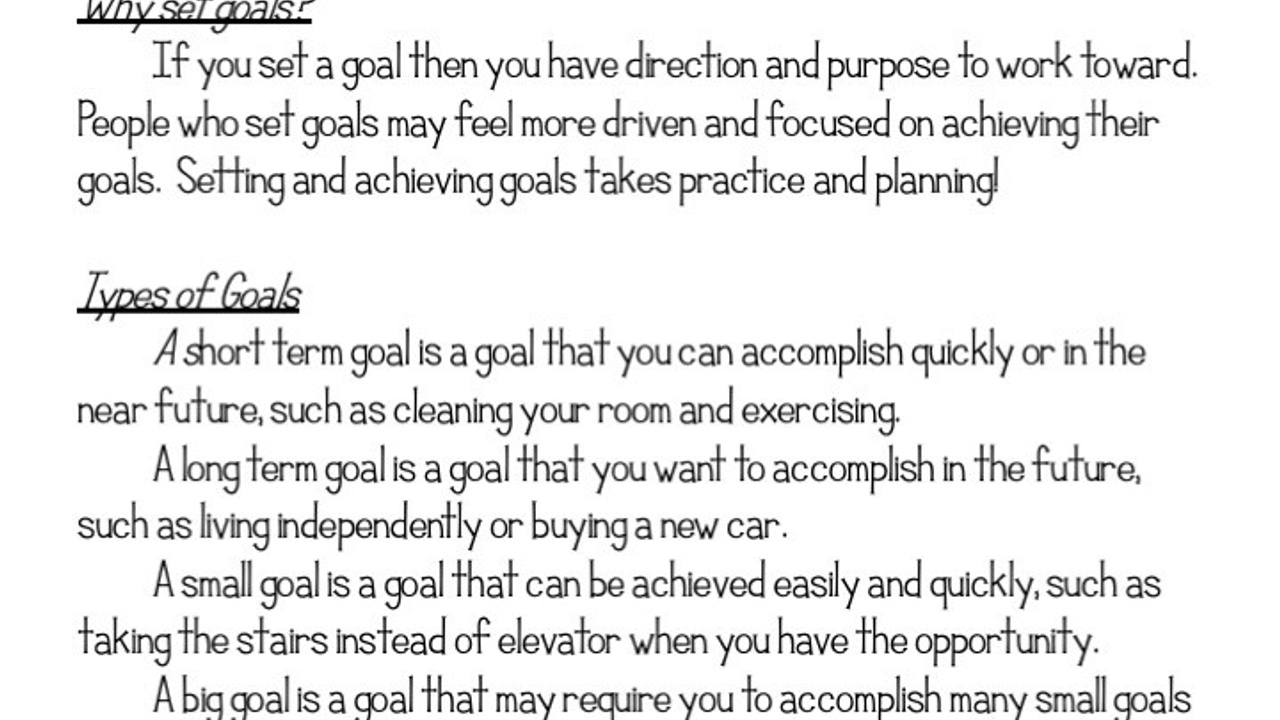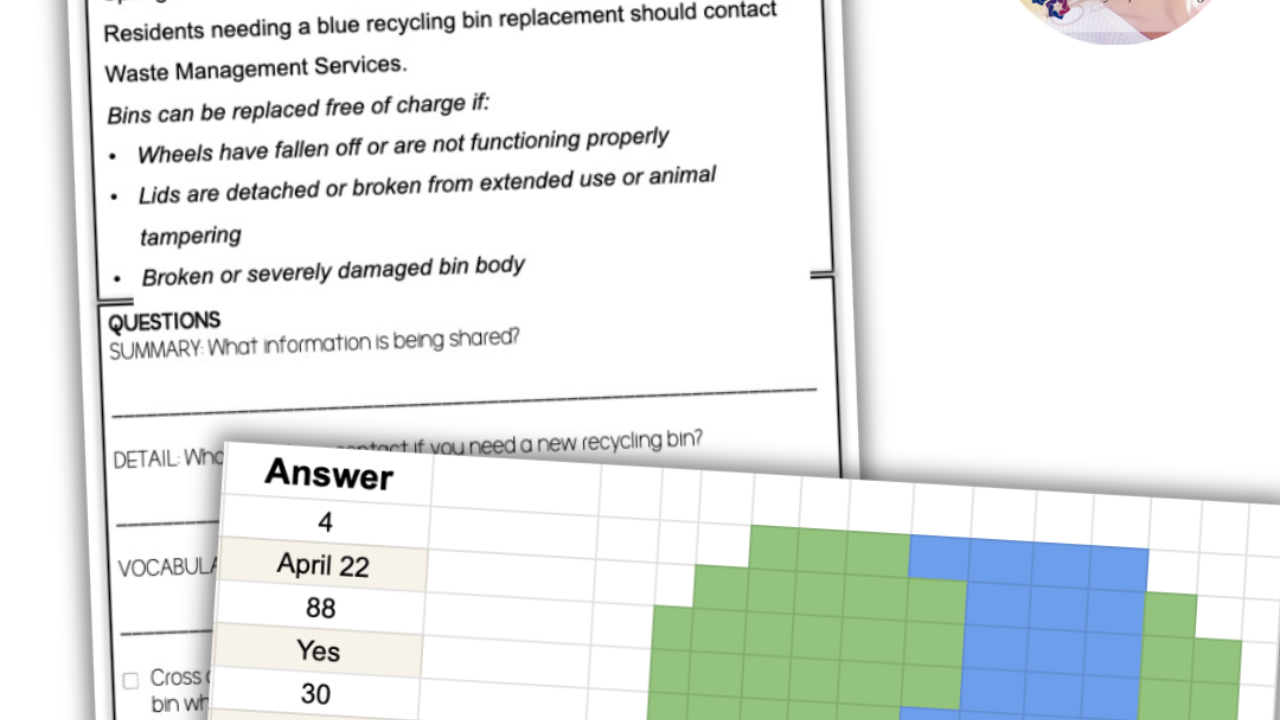Our next topic in the Consumer Math Blog Series is about how to teach Goal Setting. Read more about why and how you can teach Goal Setting using my Goal Setting Lesson Unit (click here to get your copy).
Purpose of Teaching about Goal Setting
Your students have goals that someone else set for them (IEP goals) and they may or not be aware that they are supposed to be building skills to strengthen their weaknesses. Most of your students have had IEP goals for years and years and may not even know it or really understand what an IEP goal is.
While we don’t want this lesson to hone in on those specific IEP goals, the purpose of teaching goal setting is to see that it is something that everyone (regardless of age, skill level, or anything) can and should do.
Key-Must-Teach Concepts
Goals look different. There are at least 4 different kinds of goals (long, short, big, and small) and they are achieved at different times and with different levels of energy and effort.
Everyone can set goals. This also means that anyone can achieve goals. Be sure to drive that home and help students find ways to celebrate once they have achieved a goal (no matter the size)!
Lesson Objective
Identify and develop a short and long term attainable goal.
Lesson Unit Break Down
Day 1- Since students may be at very different levels of understanding of goal setting and the different types of goals, it may be smart to keep the delivery of the content very clear and straightforward. Use the Reading Passage Option below to help drive home the different types of goals. Use the T/F questions to gauge your students’ understanding of the concept and then move to the writing prompts to continue reiterating the ideas. End the lesson with the visual flow chart and then visit the brain teaser (or save it for the following day, your choice)!
Day 2- Drive home the basic goal setting ideas on Day 2 with the two versions of notes. Start with the general Notes printable, which can further build the understanding of setting goals, then cover the Parts worksheet. While it is set-up similar to notes and is intended for full class participation, it takes a deeper dive into the concepts by starting to connect examples.
Day 3- This day will help students to create a vision and then decide what part of that vision they want to focus on fleshing out. The Goal Setting- Thinking about the Future is a whole class discussion, but ends with individualized ideas. Next, the focus will be on Short Term Goals and students will begin to detail some of their own short term goals (with the help of a more veteran goal setter- their teacher!)
Day 4- Building on the ideas from Day 3, Day 4 tackles Long Term Goals and then helps students share their goals with others. Move those desks into a circle and have students share what their goals are. They can share all of their goals or only a few, leave that up to them. I think the social emotional impact of sharing their dreams and goals with their peers is quite powerful. Let the honest and open conversations flow!
Day 5- Per usual, this day is for review and assessment (and keeping those basic skills strong). Use the task cards for review, see the suggestion below), then let students show off their skills with the assessment and functional math review. End with the word search, which is always a winner!
Set Goals Lesson Unit
Reading Passage Option
The reading passage lays out the 4 different types of goals- long, short, big, and small. Yes, they can overlap, but they can also be very different. Use the back side of the reading passage to have students identify some long, short, big, and small type goals as it relates to a team. The team can be your class, a school sports team, a national sports team, or any team that would help them to think outside of themselves. If you want the reading passage to be a little more interactive, then write the 4 options up on the board and have students work in pairs to identify goals for each and then write them on the board.
Listen and Learn
Task Card Idea
If you have the Headbanz game, then grab the head band card holder and have at it! Mark the right answer on the card (laminate and use dry erase markers) and have partners put a card on the heads. One person asks the peer the question and can see the right answer. No need to record who got what right, just review so each student gets asked every question.
Extra points if you have more than 1 of the game and feel free to tap into your resources- your speech therapist or social worker might have a few sets you can borrow.
Further Practice Idea
This is a dream goal of mine to do one day, so while I haven’t yet done it, it’s on my professional ‘goal list.’
I’d like to reach out to a former student who was more goal oriented and have them come back as a speaker for the class. I’d like them to speak about what goals they set, what they thought was realistic, what they have learned along the way, and what new goals they are setting for themselves. I think it’s so important for the students to see themselves in someone who has set goals and has accomplished them.
Ultimate Goal of the Lesson Unit
The ultimate goal is to have a goal! Any goal! A simple goal or a complex goal, it doesn’t matter. If your students can set a goal, realize their setting a goal, and start to work towards it (even if it is one tiny step), then your teacher goal has been met!
May I Also Suggest Teaching
Goal setting and
Time Management have so much in common and are great to pair together!
You may learn a new idea to two from these Consumer Math Blog Posts:
How I Teach Estimation

















